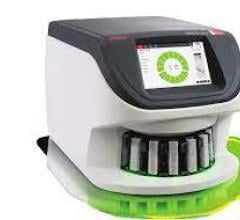December 8, 2015 — IDS announced the release of AbbaDox HTML5 DICOM Image Viewer and the DICOM Virtual Appliance. Both applications are designed to fully support inter-PACS (picture archiving and communication system) communications with logic-driven routing and vastly improved image load and transmission speed, replacing its previous DICOM image viewing module.
Among the prominent features are advances in image transfer and viewing. Images load instantly, demonstrating faster load and transmission times. The zero-footprint AbbaDox Image Viewer requires no client installation and is compatible with all modern web browsers that are HTML5-compliant including Google Chrome, Internet Explorer 11, MacOS Safari and Mozilla Firefox. Users can also access the Image Viewer through native apps on the iPhone, iPad and Android mobile devices.
Developed using the newest version of the hypertext markup language, HTML5, the AbbaDox Image Viewer is a true end-user, cross-platform solution which replaces its predecessor application built on the Microsoft Silverlight development platform. The increased speed, ease of deployment and rich user interface, along with the dynamic and responsive interaction, particularly with mobile devices were all factors in adopting the HTML5 standards and methodologies for the product redesign.
The release also includes major improvements to the DICOM Virtual Appliance. The new architecture improves the image cache with increased processing, routing and archiving capabilities. Addressing the need for imaging centers to have access to a highly-durable, highly-available repository service, the appliance acts as a full PACS, providing online storage with various storage topologies — these include local RAID arrays, external hard drives or nearline storage using network or cloud storage services. It also supports offline devices such as tape backup.
The new backend appliance is also capable of transcoding incoming DICOM images on the fly offering more efficient storage with the JPEG 2000 lossless file format. In addition to JPEG, users can download images to the local workstation as a DICOM image or a study with the full series of images.
Improvements in routing include bi-directional image transfer, allowing images to be shared across locations with groups or individual users. Studies can also be sent to a specific PACS. The new design optimizes workflows through querying multiple, remote PACS while providing routing rules based on logic designed to direct the studies in an efficient and intelligent manner. Images on a CD, for example, can be uploaded using the CD Uploader and then routed to an archive or the main PACS with additional routing instructions based on modality or other criteria.
The new viewer maintains the original user interface and popular features such as window and level controls, triangulation, zoom, magnify, measurements and annotations. Because image rendering has moved from the server to the Web client, image processing operations such as window leveling are faster and more responsive.
For more information: www.idssite.com


 May 02, 2024
May 02, 2024 








